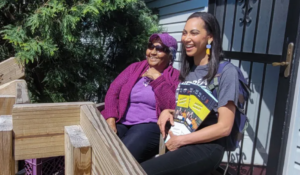4 trends in public school enrollment due to COVID-19

When schools began the fall semester of 2020 – six months after the World Health Organization declared COVID-19 a pandemic – many of them reported a significant decline in student enrollment.
Federal education data shows that public school enrollment dropped 3% compared to the previous year. That means roughly 1.5 million students exited the U.S. public education system.
To better understand these enrollment declines, we analyzed school enrollment records for every student in the state of Michigan. This deep dive focused not only on how the pandemic affected the number of kids enrolled in public schools – both traditional and charter – but also whether families decided to home-school or enroll in private school. We compared these student-level records from Michigan with national data from the Household Pulse Survey conducted by the U.S. Census Bureau in 2020 and 2021.
Our research uncovered four major trends in school enrollment during the first year of the pandemic.
1. Kindergarten experienced a big drop
In Michigan, overall public school enrollment decreased by 3% in the fall of 2020. The largest decline was in kindergarten, where enrollment dropped 10%. The national data follow a similar pattern, showing a 3% drop in overall enrollment and a 9% drop among kindergartners.
These enrollment drops are a big deal for several reasons.
For starters, if the families who pulled their kids out of public schools during the pandemic never come back, it means fewer students and less money for public schools.
However, if most students ultimately reenroll in public schools, there will be sharp – and possibly unplanned – increases in the overall size of the student body at many schools.
If schools are not able to quickly adapt by hiring more qualified teachers, this could result in a range of challenges, including above-average class sizes, which directly affect students’ learning.
2. Homeschooling became more popular
In February 2020, 4.5% of U.S. households with school-aged children reported home-schooling at least one child. By the fall of 2020, that rate jumped to 7.3%. This was driven largely by families with children in elementary school.
In Michigan, we found that among students who left the public school system for an alternative education sector, the majority elected to enroll in homeschooling, though there were also increases in private school enrollment. For rising first graders, for example, exits to homeschooling accounted for 56% of the total number of students not returning to public schools.
3. Parents based decisions on how schools held class
Both in Michigan and nationally, school systems that offered in-person instruction in the fall of 2020 had larger increases in homeschooling rates than school systems that offered remote instruction. On the other hand, school systems that offered remote instruction in the fall of 2020 saw relatively larger increases in private school enrollment.
These patterns suggest that no matter what public schools chose – in-person or remote instruction – many parents were going to send their children elsewhere.
The disproportionate increase in homeschooling rates in districts offering in-person instruction suggests that some families pulled their children from public school due to health concerns related to in-person instruction during a pandemic.
However, the disproportionate increase in private sector enrollment in districts offering remote instruction suggests that other parents were eager to seek out in-person learning opportunities, possibly due to concerns about the quality of instruction and learning in a remote setting.
4. Age, income and race all factored into schooling decisions
Changes in school enrollment patterns varied substantially by students’ grade, family income and race. In Michigan, we found that the drops in kindergarten enrollment were largest among low-income and Black students. However, the smaller enrollment declines in other grades were disproportionately among higher-income and white students.
These patterns highlight important differences in how families make schooling decisions. Black and lower-income families appear to be more likely to enroll in alternative sectors at the time of initial public school enrollment, specifically kindergarten. Meanwhile, white and higher-income families appear more open to alternative options after their child has already been enrolled in the public school system.
This finding adds an additional layer to evidence that race and income were not only important factors in access to in-person instruction, but also how families responded when offered either in-person or remote instruction.
Whether students who were pulled from the public school system fare better or worse academically remains to be seen. Much of it depends on the quality of the instruction being offered at their new schools.
But given the disproportionate economic, health and social effects that the pandemic has already had on historically disadvantaged communities, these enrollment trends may widen existing achievement gaps in years to come.
This article was originally posted on 4 trends in public school enrollment due to COVID-19





